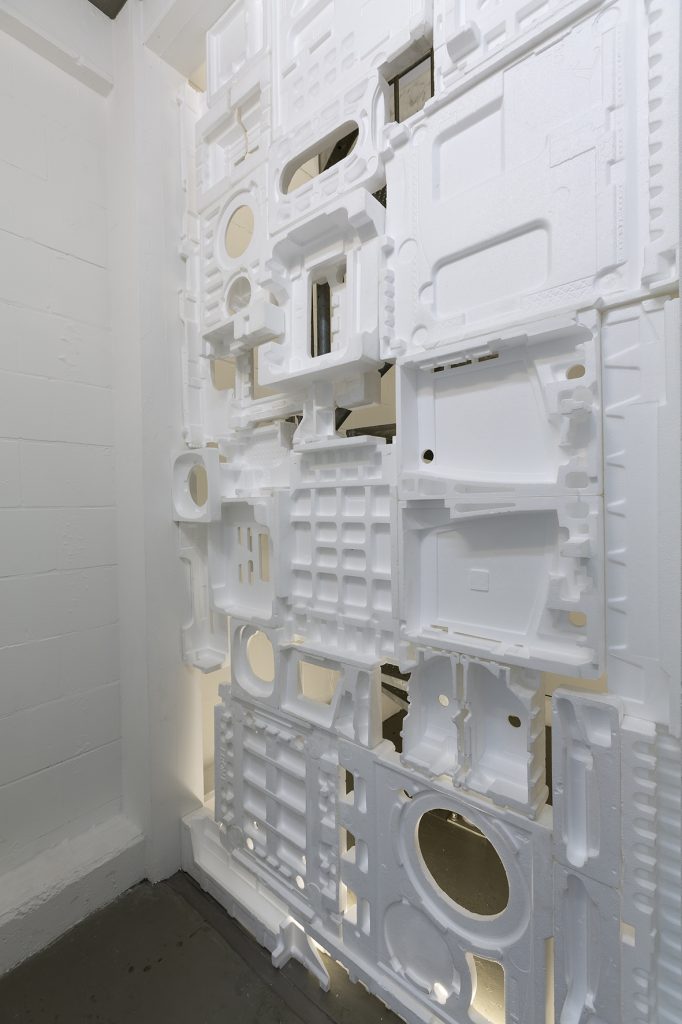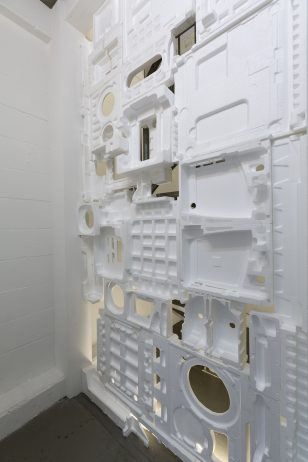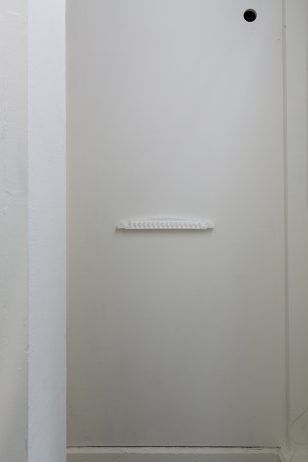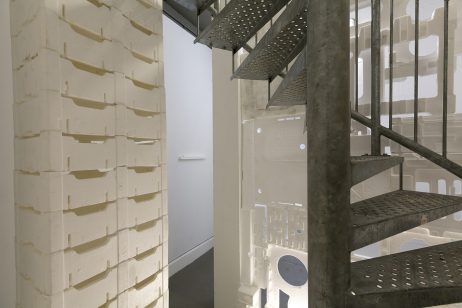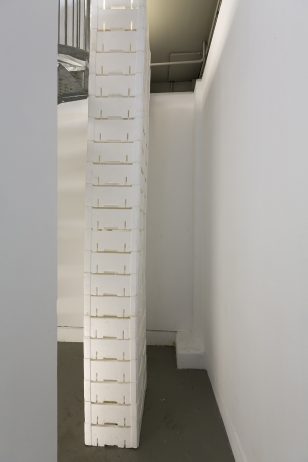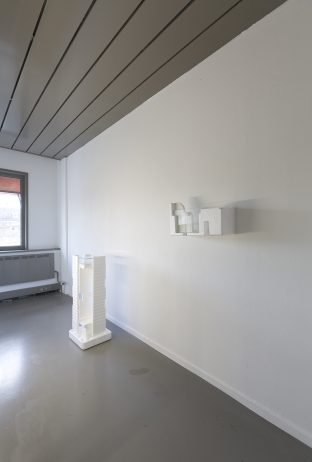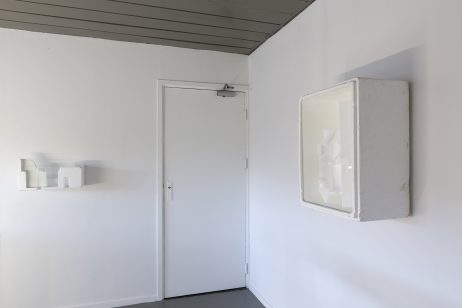Lisa Sudhibhasilp‘s three-staged script for P//////AKT sets out to investigate, and perhaps even emphasise, the structures underlying presentation and the extent to which the boundaries between intent and experience, art and display, might dissolve. While the first act dealt with notions of stage and backstage, the focus now shifts to décor and the question of (material) value. The presentation mainly consists of (partly ready-made) works in Styrofoam, which is in itself used daily in various ways: it preserves, protects, isolates or can be moulded into decorative elements. In all its functions however, it remains a ‘poor’ material that is used for practical reasons or as a simulacrum for something else. It is the package, the structure, the frame and the decor. For her second P/////AKTPOOL presentation, Sudhibhasilp has turned the material into a display that is setting its own conditions, showing the aesthetic properties and proposing to look at these composite objects as display commodities, carrying their own value.
—-
NL
Met haar script, dat zich in drie bedrijven afspeelt in P/////AKT, onderzoekt Sudhibhasilp de structuren die aan het presenteren als zodanig ten grondslag liggen en bevraagt ze de mogelijkheid om de grenzen tussen opzet en ervaring, kunst en display, op te heffen. Waar de eerste acte inging op de noties van stage en backstage, verschuift de focus nu naar decor en het vraagstuk van (materiële) waarde. De presentatie bestaat voornamelijk uit (deels ready-made) werken uit Styrofoam, dat op zichzelf dagelijks op verschillende manieren wordt gebruikt: om te conserveren, beschermen, isoleren of om decoratieve elementen van te maken. In alle toepassingen blijft het echter een ‘arm’ materiaal dat om praktische redenen wordt ingezet of als simulacrum voor iets anders. Het is de verpakking, de structuur, de omlijsting en het decor. Voor haar tweede P/////AKTPOOL presentatie heeft Sudhibhasilp het materiaal omgevormd tot een display die zijn eigen condities stelt, door de esthetische eigenschappen te tonen en voor te stellen om deze samengestelde objecten te zien als display commodities, die hun eigen betekenis dragen.

